Account of the main events in the Israel-Hamas war and hostilities by the Iranian Axis
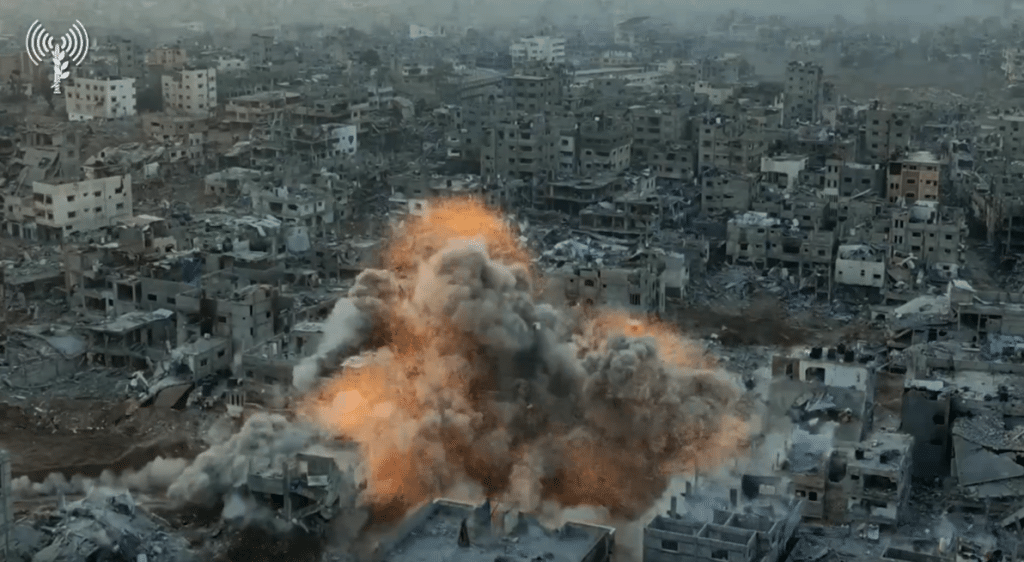
Overview
- The IDF and government officials are signaling that they intend to move to stage 3 of the operation in the coming weeks – the “clearing”. This stage includes creating a new security framework for Gaza and combatting against remaining pockets of resistance once the main stage of combat is completed.
- Israeli Defense Minister Yoav Gallant released a four-pronged security and governance plan for the Gaza Strip, which was discussed in the war cabinet.
- IDF forces continued their integrated ground maneuver focusing on the Daraj-Tufah neighborhoods in the northern Gaza Strip and the city of Khan Yunis in the south.
- Hamas leader, Saleh Al Arouri, Haniyyeh’s Deputy in Hamas’ political Bureau is eliminated in Beirut, reportedly by an Israeli strike. While Israel did not claim responsibility for the action, Hezbollah and other factions vow to avenge his death and retaliate.
- The Israel Defense Forces discovered and destroyed Hamas tunnels under the Blue Beach Hotel in the Shati Camp.
- Hezbollah launched an unprecedented barrage of rockets into Israel, including more sophisticated weapons, allegedly as a revenge for Al-Arouri’s targeted killing. The organization claimed it fired 62 rockets, including targeting sensitive Israel Air Force facilities. The IDF Spokesperson confirmed that the Air Control Unit’s base was hit by Hezbollah, with “reparable damage”. The terrorist organization’s Secretary General, Hassan Nasrallah, gave two speeches within 3 days in which he claimed Lebanon should “free its occupied lands” after the Gaza campaign, committed to avenge Arouri’s death, but did not commit publicly to a specific scale of retaliation.
- IDF and Border Police forces carried out an irregular 40-hour-long counterterrorism activity in the Nur A Shams area near Tulkarm, Judea and Samaria (“West Bank”). Among other findings, a booby-trapped building was located, with an UNRWA kindergarten in its ground floor. Two IED labs were destroyed.
- ISIS carried out a terrorist attack in Kerman City, Iran in a gathering commemorating the 4th anniversary to Qasem Soleimani’s death. 84 people were killed and 284 injured. Iranian state media is downplaying the connection between Afghanistan and are blaming the United States and Israel for the attack instead.
- The Iranian-backed Houthis and Iranian-backed Iraqi militias are driving escalation in the region by attacking global shipping and US forces.The United States has so far not responded to Houthi attacks with military action targeting the Houthis’ ability to attack commercial shipping but threatened to attack their sites of operations.
- Iran and its Iraqi proxies are advancing their campaign to expel US forces from Iraq. Iraqi Prime Minister Mohammad Shia al Sudani formed a committee on January 5 to facilitate the withdrawal of US-led Coalition forces from Iraq.
- The al Aqsa Martyrs’ Brigades attacked Israeli forces in Masliya, Jenin, Balata and Netsani Oz, near Tulkarm.
- Palestinians demonstrated in four towns on January 5 following Hamas’ call on January 4 for protests against Israeli operations in Gaza and the killing of Arouri.
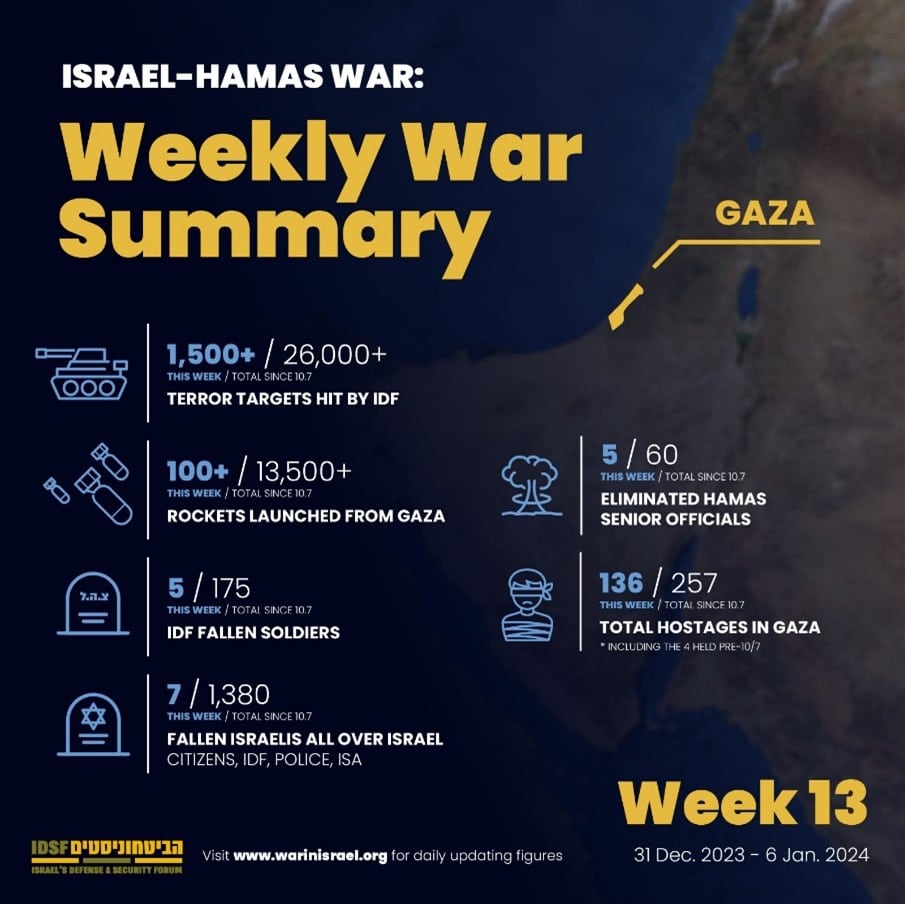
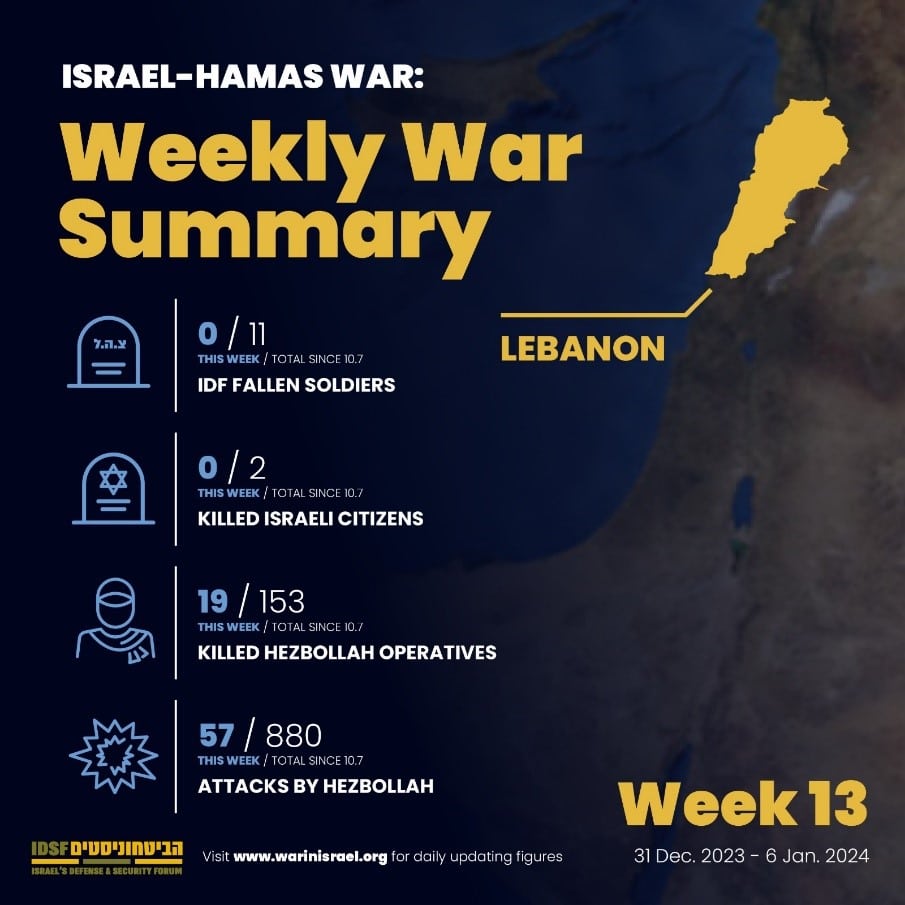
Gaza Strip
Diplomatic
- Israeli Prime Minister Benjamin Netanyahu committed to continue the war until the end, and not to halt the high-intensity stage of the fighting until the mission in Gaza is completed.
- The Security Cabinet gathered to discuss its “Day After Hamas” plan for Gaza strip. This happens as the IDF is discharging a few brigades including armored brigades in northern Gaza and focuses on maintaining the ground it has secured in the north. Some of the troops were redirected to the Lebanese front in preparation for a possible escalation.
- Defense Minister Yoav Gallant presented his plan for the upcoming year which included: continuing to fight in Gaza with varying levels of intensity until the elimination of Hamas and its capabilities; Gaza civilians would be permitted to return to the north only after the remaining Israeli hostages are released and Israeli civilians could return to their homes in the Gaza envelope; destroying remnants of resistance pockets; and finally Israeli security control of the Gaza strip.
- Per Gallant, such security control would look like the situation in Judea and Samaria, where Israel maintains the ability to act and eliminate ad hoc threats in Gaza with relatively small incursions into the area. The civil administration would be given to local citizens in a model that would be determined in the future. but appears very similar to IDSF Advisory Board Member, Dr. Mordechai Keidar’s ‘Emirates Plan’ of local tribal (Hamula) rule by area. The administration responsible for rebuilding of Gaza would be given to an international body that would include Israel, the US and other Arab countries.
- This mini “Marshal Plan” is expected to cost $50 Billion and would take place over the course of 7-10 years. Israel would be able to oversee this body including the passage of goods to the Gaza Strip including the Rafah Crossing and the Philadelphi Route, two areas that Hamas had previously exploited to smuggle weapons, arms and materials for the construction of their military infrastructure.
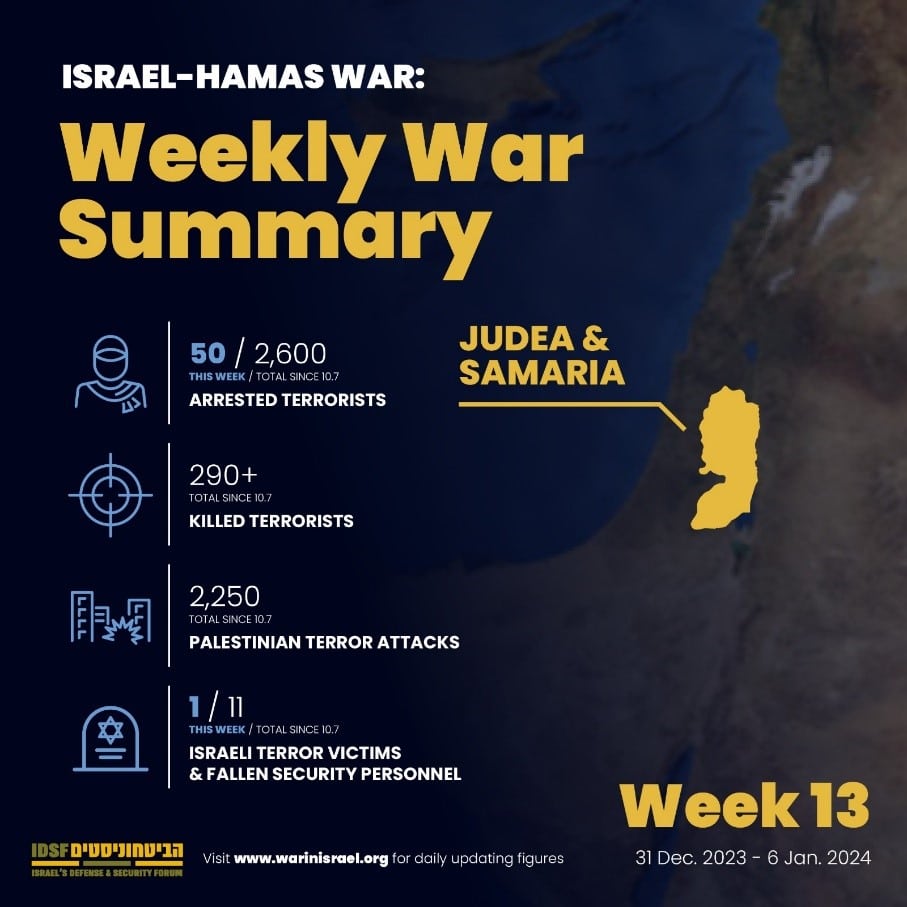
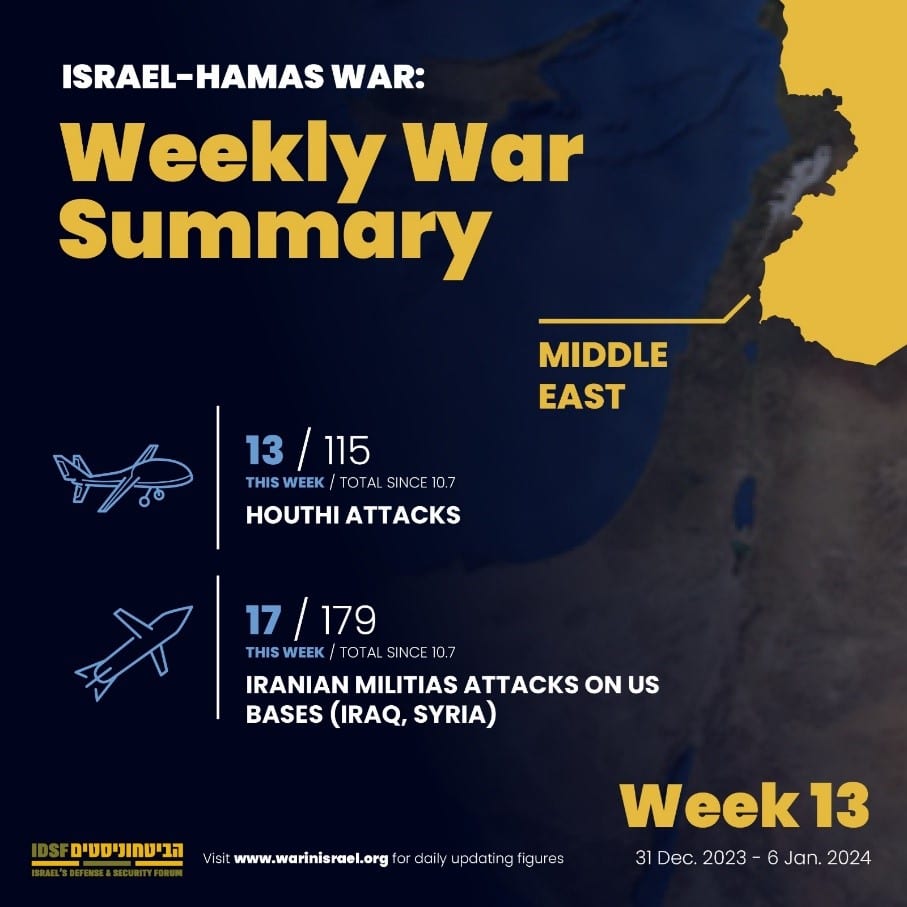
- Ministers Smotrich and Ben Gvir stated their willingness to include in the plan a component of voluntary emigration from the Gaza Strip to other countries. These comments received broad international condemnation.
- Gallant’s plan was proposed as a topic for discussion, rather than Israel’s official plan for the day after in Gaza. It was received with mixed reactions in the political system.
- Muhammad Nizal said in an interview that the PA was not an enemy of Hamas and they were open to talks with any Palestinian organization, including Fatah. In a joint statement they said the door was open to talks with Fatah regarding the ending the “aggression” and the Palestinian view of “the day after.”
- After Israel announced its intention to create a local administration in Gaza based on local tribes, the supreme authority of the clans in the Gaza Strip condemned the proposal, claiming its objective was to drive a wedge in Palestinian society.
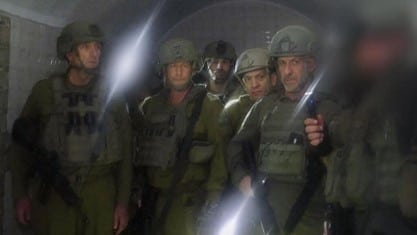
Operational
- The IDF and government officials are signaling that they intend to move to the third stage of the operation in the coming weeks – the “clearing”. This stage will include the creation of a new security framework for Gaza. From an operational point of view, the IDF still has a lot more work to do, to achieve operational control and commence this new stage. The IDF is currently carrying out the main stage of the war – full intensity, as part of the process of destroying Hamas’s military infrastructure. That, while continuing to eliminate pockets of resistance within areas that have already been captured.
- The IDF created a new humanitarian corridor for Gaza civilians along the Al Rashid Road next to the Sea after Saleh Al A Din Road became an active battleground, as the IDF captured ground north of Dir El Balah.
- In the past week, IDF forces continued their integrated ground maneuver focusing on the Daraj-Tufah neighborhoods in the center, in the northern Gaza Strip, and Hamas’ nerve center – the city of Khan Yunis in the south, where they operated in the Khirbat al-Khiza’a area to gain operational control the region. The fighters waged fierce battles against terrorists. The Israeli Air Force, directed by ground forces and intelligence, attacked terrorist units and military facilities.
- The Khan Younis Hamas battalions’ central command has been destroyed. Their forces are being reinforced by fighters from the Radah Battalions as well as fighters from other organizations. The fighting squadrons are pushing back against the advancing IDF forces independently, but it is just a matter of days before Khan Younis, one of Hamas’s central command centers, falls. The turning point of the campaign will likely occur when Dir El Balah falls marking the fall of the central brigade in the Strip.
- The IDF killed one senior official of Palestinian Islamic Jihad – Mamdouh Lulu, head of the PIJ’s operational headquarters in the northern Gaza Strip.
- Israel has announced that it will move forces along the Philadelphi Line which had been threatened by an Egyptian MP threatening war with Israel.
- Israel reported that its forces completed its mission in Daraj Tuffah in Gaza City.
- After a week-long operation, Shayetet 13, Yahalom and other units took control of an underground tunnel network in the center of Gaza. This network consisted of more than 10 separate tunnel openings, with tunnels stretching for hundreds of meters.
- The area in northern Gaza captured by the IDF has not been thoroughly cleared as Hamas continues to fire rockets at Israel from it, and there continue to be terrorists who attempt to ambush IDF troops from tunnels.
- At exactly Midnight on New Year’s Eve, Hamas launched a barrage of dozens of rockets to central Israel.
- The IDF directed its efforts in the Khan Younis area in the town of Khuzaʽa where many tunnel openings were uncovered. There remain pockets of resistance who fought the IDF with anti-tank missiles and actually attempted to attach explosives to military vehicles.
- Hamas and another faction called Mujahedeen Brigades attempted to intercept a military helicopter above Gaza and in Khan Younis. Hamas claims to have shot down a drone above Zaitun.
- At Shifaa hospital’s 250 meters long tunnel was uncovered and destroyed.
- Hamas terrorists who were captured by IDF troops provided important intelligence regarding the whereabouts of many tunnels.
- The IDF uncovered Palestinian incitement materials for children, instructions concerning the tunnels and evidence of Hamas’s use of children for reconnaissance in military operations and ambushes.
- In Bani Suhela, Khan Younis IDF troops found weapons including vests, grenades, rifles and more next to children’s games designed to indoctrinate children to hate Israel and commit terror against it.
- The IDF found tunnels weapons and safe houses in the “Blue Beach” hotel in Gaza, a luxury resort that opened in 2015. Under the pool and the gym, Hamas built a large tunnel network and used the 162 rooms in the hotel as a stronghold for terrorists.
- Shin Bet Chief, Ronen Bar visited a Hamas tunnel in Khan Younis on Saturday along with IDF chief Herzi Halevi and other military officials.
Hostages
- Tamir Adar, one of the hostages taken on October 7th was pronounced to have been killed on October 7th after 91 days in which he was believed to be alive.
- The IDF Spokesperson stated that three Israelis previously considered as missing are now determined hostage.
- The US State Department published a bounty on Hamas financiers with rewards of up to $10 million for information about them.
- The PIJ reported that Ziyad al-Nakhalah, PIJ secretary general said, in response to Netanyahu’s statements, that there would be no hostage exchange or other deals with Israel unless the aggression stopped and the IDF forces completely withdrew from the Strip. Otherwise, he claimed, it was pointless to talk about it
- Muhammad Nizal, a member of Hamas Political Bureau said it made no sense for them to enter into negotiations after the killing of Saleh al-Arouri, and that it was currently impossible to return to indirect negotiations. Later he made remarks that in the coming days they might reassess the situation and decide to return.

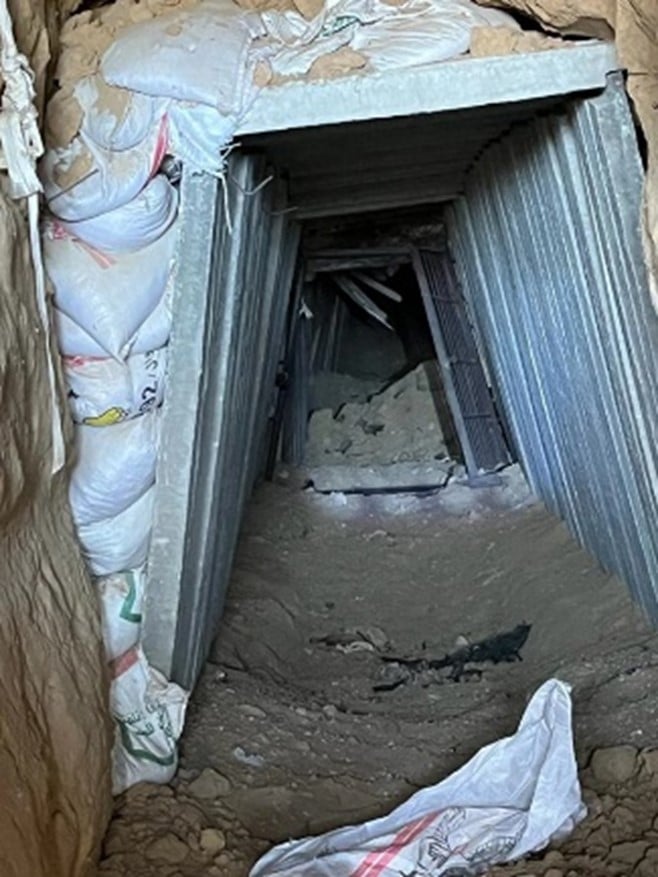
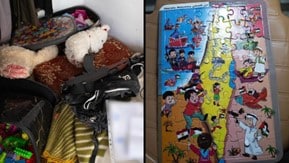
A children’s puzzle shows a map of the entirety of the Land of Israel, including the State of Israel, presented as Palestine, as found by IDF soldiers in the Gaza Strip
Lebanon
- This week’s seminal event was the killing of Hamas Deputy Chief, Saleh Al Arouri, in Beirut. Arouri was assassinated in an explosion at the heart of the Dhahia quarter in Beirut, a Hezbollah stronghold. Iran and Hezbollah accused Israel for the assassination and said it crossed a red line. Along with Al Arouri, Hamas has announced that a total of seven of its men were killed in the attack, including senior ones. Israel did not claim official responsibility for the attack.
- This assassination, in the heart of Hezbollah’s nerve center, represents a major blow to Iran, Hezbollah, and Hamas’ morale in the war. Arouri was an incredibly central and influential figure in Hamas, leading the organization’s pro-Iranian faction, and orchestrated multiple deadly attacks against Israel from his seat in Lebanon, and previously Turkey. He served an almost two-decade prison sentence in Israeli prisons and spoke Hebrew fluently. It was reported he was part of the planification process of the October 7 massacre.
- Israel, through various top officials including the National Security Advisor, Tzachi Hanegbi, has stated that it could not tolerate Hezbollah’s presence next to its borders and that Israel is determined to drive Hezbollah north of the Litani River diplomatically or militarily. Similar statements had been made by Defense Minister Gallant.
- The US and France have sent some of their diplomats to Beirut and are planning to send others in the future including Secretary Blinken. They will attempt to bring a diplomatic solution to Hezbollah’s presence south of the Litani River in violation of UN Resolution 1701.
- This comes after the US announced that it will redirect its aircraft carrier USS Gerald R Ford from the Eastern Mediterranean back to the mainland, which leads to a situation where Hezbollah and other Iranian proxies could feel less deterred.
- Hezbollah Secretary General Nasrallah is continuing his efforts to create some equilibrium with Israel by escalating its responses. He has attempted to match his threats and the military attacks by Hezbollah to the severity of the Israeli attacks in Lebanon and in Gaza. This way he hopes he could drive Israel to behave in a way that is compatible with his goals. A Hezbollah official has stated that Israelis could return to their homes in the North only after the ground operations in Gaza stop. So far, from Nasrallah’s remarks in his speech after the targeted killing of Al Arouri, he has signaled that he is not interested in war, however committed to “liberate the occupied Lebanese lands” after the Gaza campaign. The IDF is ready for a preemptive strike against Hezbollah but is holding its ground, waiting to see if there could be any diplomatic developments that could pressure Hezbollah to retreat.
- In his speech titled “On the way to Jerusalem,” Nasrallah boasted of Hamas’ achievements, mocking Israel and claiming that Israel could not produce a picture of a victory even after 3 months of fighting. He mentioned that Israel’s image as a strong country was damaged and that he was pleased that the Palestinian cause returned to the world stage which would foil any other attempts of normalization with other countries in the region. Moreover, he mentioned that Hezbollah’s quick and decisive actions on October 8th deterred Israel from attacking Lebanon. He claimed the organization began to prepare for an all-out war and has put its rocket arsenal on high alert.
- On Saturday, January 6, 2024, 3 days after the killing of Al Arouri, Hezbollah launched an unusually large barrage of rockets- 62 according to Hezbollah, including 40 which crossed to the northern Israel according to the IDF spokesperson. This was an “initial response” for the killing of Al Arouri, the organization commented. This was the first major response after Nasrallah had promised to respond to the killing of Al Arouri.
- The IDF responded and killed several Hezbollah operatives, bringing the number of Hezbollah casualties from the beginning of the war to at least 152.
- Hezbollah increased the scope of its operations and claimed responsibility for carrying out 15 attacks, launching anti-tank missiles, rockets and Burkan rockets (with a warhead weighing 300-500 kg). The organization even claimed hitting sensitive Israeli Air Force facilities.
- Since the beginning of the war Hezbollah has attacked Israel 880 times.
- After Nasrallah’s speech following the Al Arouri killing, Germany, Canada, Sweden and Denmark asked their citizens to leave Lebanon immediately.
- IDF attacked a Hezbollah stronghold in a Lebanese town considered deep in Lebanese territory as a response to Hezbollah rocket barrage.
- The Site the IDF attacked in Lebanon. Credit: Jihad Land, Telegram
- Hezbollah released an unusual announcement asking Lebanese residents of Southern Lebanon to evacuate out of concern to their safety.
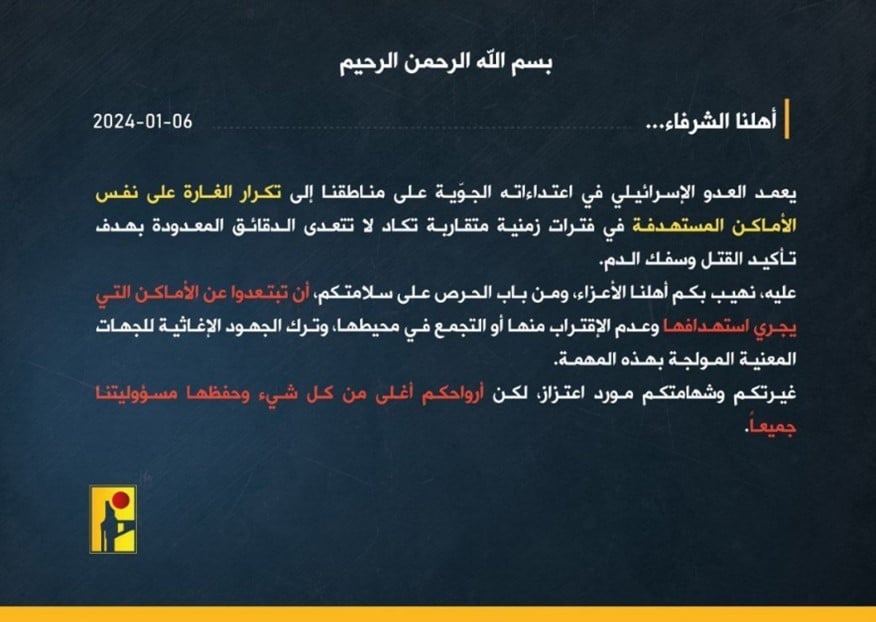
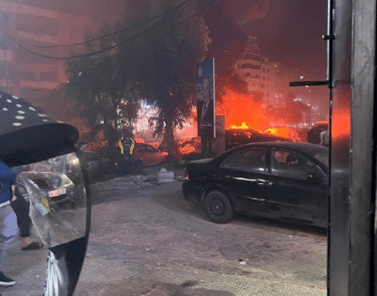
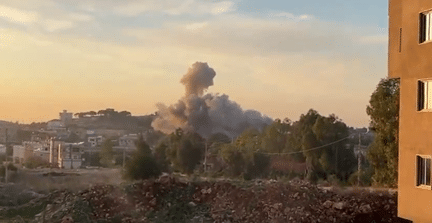
Judea and Samaria
The main “hotspot” of the IDF’s counterterrorism activity focused this week on Samaria, in the Nablus area and its neighboring village Nur A Shams.
- From the beginning of the war, the IDF has detained 2500 terror operatives, 1300 of which are Hamas affiliated.
- IDF and Border Police forces operated in the Nur A Shams area near Tulkarm, during an irregular 40-hour-long operation to track terrorist infrastructure and arrest terrorists. 11 suspects were arrested, hundreds of IEDs were destroyed and multiple weapons were confiscated. Among other findings, a booby-trapped building was located, with an UNRWA kindergarten located in its ground floor. Two IED labs were destroyed.
- The IDF eliminated 4 terrorists who took shelter in a house in the Azoun village. During the operation, 3 “Carlo” guns were confiscated.
- An armed terrorist with a gun attacked security guards in the Mishor Adumim industrial zone. The terrorist was neutralized on the spot.
- Hamas is using the incident in which a Palestinian security prisoner died in an Israeli prison, to incite retaliatory actions saying on various telegram channels that prisoners are a red line.
- After the killing of Al Arouri, there were many protests in Judea and Samaria as well as Jordan.
- Reserve soldiers found a 5-meter-deep tunnel with branching tunnels in Israeli controlled, Area C only a few hundreds of meters form Jewish settlements. The soldiers released the images without consent from the military censor and uploaded it to social networks.
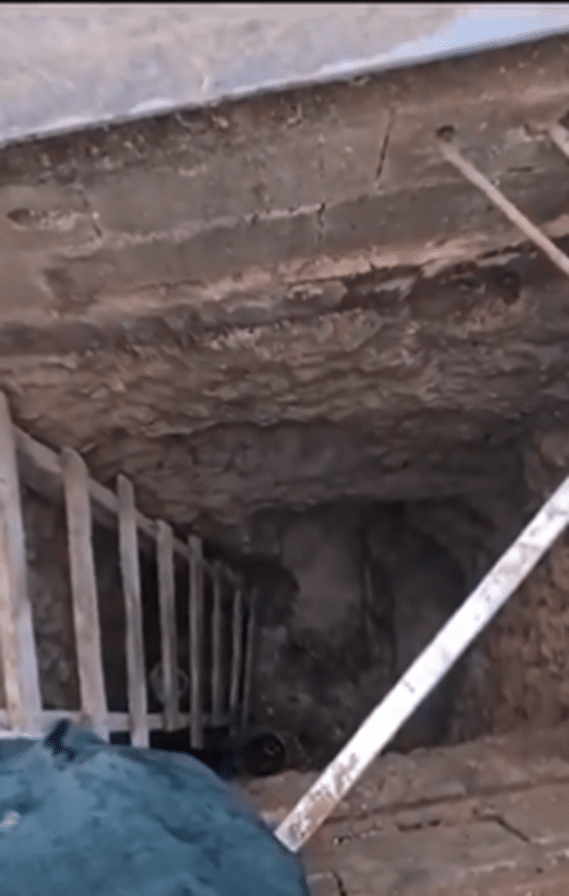
Iraq and Syria
- The Iranian backed militias have attacked American bases in greater frequencies this week, and the Americans have also intensified their response. After two UAV attacks against US bases in Syria, the US killed a militia leader in Bagdad with ties to the Iranians who was responsible for the ethnic cleansing of Sunnis in Iraq. This is a more severe American response compared to the response to previous attacks.
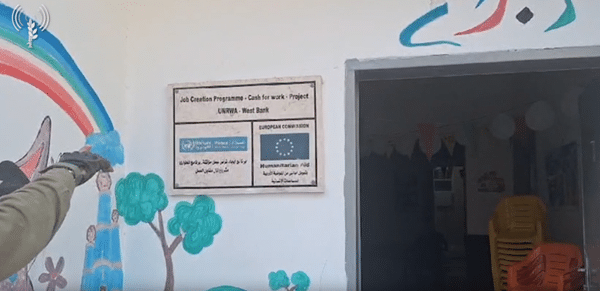
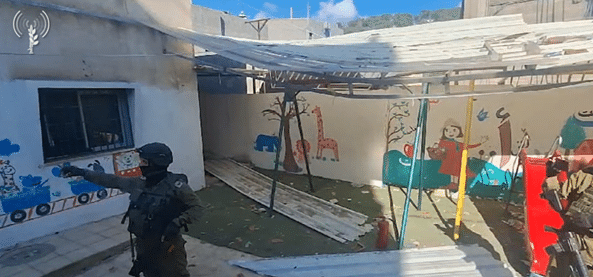
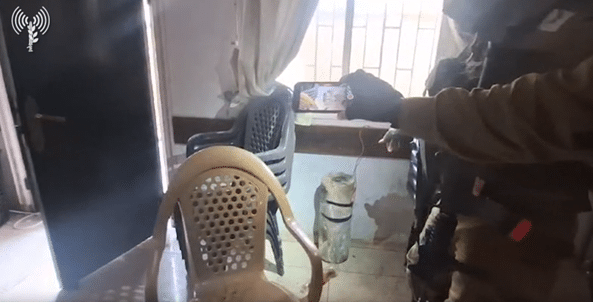
- Iraqi Prime Minister Sudani is ramping up efforts by Iranian forces to expel US forces from Iraq.
- Sudani formed a committee to facilitate the expulsion of US forces. He said that only the Iraqi government can “impose the law” in Iraq after the US carried out a retaliatory strike against a militia which resulted in the killing of a senior official of the Iranian-backed militia Harakat Hezbollah al Nujaba.
- Sudani has stiffened his tone towards the US echoing images depicting US infringement of Iraqi sovereignty. The Iraqi government’s failure to protect US forces and prevent further attacks against them has forced the United States to respond in self-defense.
- Sudani is being pressured by Iranian-backed militias which is the reason he announced his plans to remove US troops in such a short period of time. He named the Badr Organization, an Iranian proxy, as the body controlling the committee overseeing the expulsion of US forces. The same committee called for an emergency parliamentary session following the January 4 US self-defense strike.
- An IAF plane intercepted an aerial target heading to Israel from the East. The target was under surveillance and did not cross into Israel.
- After a barrage of dozens of rockets on the American, Al Omar base, in Iraq, militias sent 3 suicide drones to the base.
- After the suicide attack in Karamen in Iran, Harakat Hezbollah al Nujaba, a militia in Iraq blamed Israel and the US for the attack and claimed that acts like that only strengthen the cohesiveness of the axis of resistance. Iranian-backed Iraqi militias have attacked US forces in Iraq and Syria more than 100 times since October 2023.
- The Jordanian Air Force conducted counternarcotics airstrikes on two towns in southern Syria on January 4.
Yemen
- Houthis have attacked ships in the Red Sea 24 times since the beginning of the war.
- US Secretary of Defense Lloyd Austin, along British officials announced that there are 12 countries prepared for a preemptive attack against the Houthis which would include destroying UAV positions, missile batteries, and arms storages in North Yemen.
- The Houthis tried and failed to attack a US vessel using an unmanned booby-trapped ship 15 KM from shore.
- The Houthis attacked 2 cargo ships in the Red Sea.
- A cargo ship was attacked by 3 boats 60 miles from Al Hudaydah, Yemen. According to reports there was a firefight between the boats and security guards on the cargo ship. This incident was deemed to be piracy.
- The American Central Command reported that the Navy destroyer, USS Gravely intercepted 2 ballistic missiles that were launched towards the cargo ship, MAERSK HANGZHOU, in the Red Sea. The ship sent a distress signal after it was hit by one missile. The Houthis launched the additional two missiles as soon as the Hukaymah destroyer arrived near the cargo ship.
- Members of the UNSC called the Houthis to stop their aggression against ships in the Red Sea and the Port of Aden and release the “Galaxy Leader” Ship that they have been holding hostage since November 19th.
- UK foreign secretary, David Cameroon has repudiated the Houthi attacks saying, “This is about the freedom of navigation. This is about the ability of ships to carry their cargo…. The world economy, every economy, will suffer if ships keep coming under attack in this unacceptable way.”
- CENTCOM said that the USS Laboon, acting in self-defense, shot down a drone launched from Houthi-controlled Yemen in the southern Red Sea
- The UK Maritime Trade Operations organization reported that US-led coalition forces thwarted a suspected hijacking attempt by six small boats off the coast of Yemen.
- Houthi military leaders signaled on January 6 that they intend to retaliate for the US self-defense fire that killed ten Houthi fighters on December 30.
- US NAVCENT Commander Vice Admiral Brad Cooper stated that the Houthis tried to conduct an unmanned surface vessel (USV) attack in the Red Sea on January 4, marking the first instance of them doing so since the Israel-Hamas war began.
Global Jihad
- ISIS took credit for the Karamen attack in Iran. It was committed by 2 brothers and killed 84 people and injured 284.
- ISIS responded with mockery and contempt for the Al Arouri killing, as he is connected to Hezbollah and Iran that are Shia and are seen as infields by ISIS. Hamas men who were killed were described in a statement as “members of the Shia Qassem Brigades”.
- In Argentina, 3 suspects from Lebanon and Syria were detained after they were suspected of planning a terrorist attack on the Maccabiah Pan American games that are taking place in Buenos Aires. According to the police, the suspects were waiting for a 35 KG package from Yemen for their attack.
Iran
- Iranian Leader Khamenei is reported to have asked his military generals not to escalate tensions to the point of a war with the US.
- In the rally commemorating the 4th anniversary to the killing of Qasem Soleimani in Karamen, a double bomb attack occurred which killed 84 people. ISIS-K took responsibility for the attack. Initially the Iranians blamed Israel and the US for the attack. It is the largest attack to occur in Iran since the establishment of the Islamic Republic in 1979.
- The Iranian Intelligence Ministry announced on January 5 that security forces arrested 11 individuals in six provinces in connection to the January 3 terrorist attack.
International
- South Africa filed an application charging Israel with the crime of Genocide with the International Court of Justice (ICJ). The US has criticized this action, with US State Department spokesperson saying that the ICJ probe is not a “productive step to take at this time.” NSC spokesperson, John Kirby, has lambasted this action saying that Hamas is Hamas is genocidal, “Israel is trying to defend itself against a genocidal terrorist threat. So if we’re going to start using that word, Fine. Let’s use it appropriately”.
- Israel described the charges as blood libels and said it would defend itself against the accusation in a first hearing on January 11th. Israel is a signatory to the Genocide Convention adopted by the United Nations General Assembly in 1948 and is therefore subject to the jurisdiction of the ICJ. There would be no criminal implications for Israeli officials if the ICJ ruled against Israel, although it could lead to severe diplomatic repercussions, in terms of possible sanctions and other measures the UN and other international bodies could take against the country.
- Reports in Turkey indicated that trade between Israel and Turkey increased by 30% in the last two months which embarrassed Erdogan’s government. The Turkish Foreign affairs office released a statement denying these reports, saying that “the trade with Israel is not with the Jewish region of Israel. Trade with Israel is done for the sake of 2.2 million Israeli citizens of Arab origin who live under Israeli occupation in the West Bank, Gaza and East Jerusalem”. It continued, “In total, 8 million Palestinians live in Palestine. 7.2 million Jews live on the land of Israel. All products destined for Palestine must pass through Israeli customs and are transported there under the name Israel.” Israel condemned this anti-Semitic remark by the Turkish authorities.
- Josep Borrell, the High Representative of the EU for Foreign Affairs and Security Policy (the EU’s Foreign Minister), has said that he would present an offer for EU countries to form a naval force to help secure the Red Sea.
- Borrell later visited Lebanon and said that it is necessary to prevent regional escalation in the middle east, saying no one would benefit from it. He met with the Lebanese Prime Minister Najib Mikati and has remarked that the escalation along the Blue Line is concerning.
- Borrell also commented that with the lack of Israelis and Palestinians’ ability to find an agreed-upon solution to the conflict, the international community must “impose” a solution on the parties: “What we have learned over the last 30 years, and what we are learning now with the tragedy experienced in Gaza, is that the solution must be imposed from outside.”